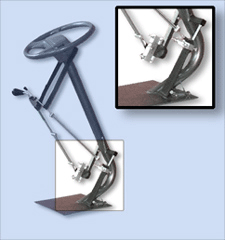If you have never checked out any TED talks before... now is the time to start. I promise you that you will be hooked!
TED's mission statement begins:
We believe passionately in the power of ideas to change attitudes,
lives and ultimately, the world. So we're building here a clearinghouse
that offers free knowledge and inspiration from the world's most
inspired thinkers, and also a community of curious souls to engage with
ideas and each other...
TED stands for Technology, Entertainment and Design. Their talks are dedicated to disseminating "ideas worth spreading". Take a break from all the reality shows, sitcoms and dramas and watch a TED talks instead with your loved ones. You will be moved, enlightened, informed and inspired!
Here are just some of our favorite TED talks dedicated to assistive technology and/or disability-related. Have you seen a talk you would like to share? Put it in our comment box - and enjoy!
1. Sue Austin: Deep sea diving … in a wheelchair
When Sue Austin got a power chair 16 years ago, she felt a tremendous
sense of freedom -- yet others looked at her as though she had lost
something. In her art, she aims to convey the spirit of wonder she feels
wheeling through the world. Includes thrilling footage of an underwater
wheelchair that lets her explore ocean beds, drifting through schools
of fish, floating free in 360 degrees.
2. Todd Kuiken: A prosthetic arm that "feels"
Physiatrist and engineer Todd Kuiken is building a prosthetic arm
that connects with the human nervous system -- improving motion, control
and even feeling. Onstage, patient Amanda Kitts helps demonstrate this
next-gen robotic arm.
3. Aimee Mullins: The opportunity of adversity
The thesaurus might equate "disabled" with synonyms like "useless"
and "mutilated," but ground-breaking runner Aimee Mullins is out to
redefine the word. Defying these associations, she shows how adversity
-- in her case, being born without shinbones -- actually opens the door
for human potential.
At TED's Full Spectrum Auditions, comedian Joshua Walters, who's
bipolar, walks the line between mental illness and mental "skillness."
In this funny, thought-provoking talk, he asks: What's the right balance
between medicating craziness away and riding the manic edge of
creativity and drive?











